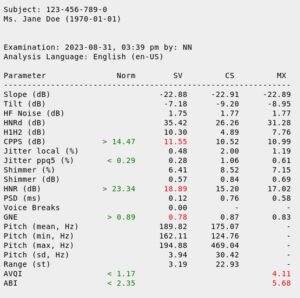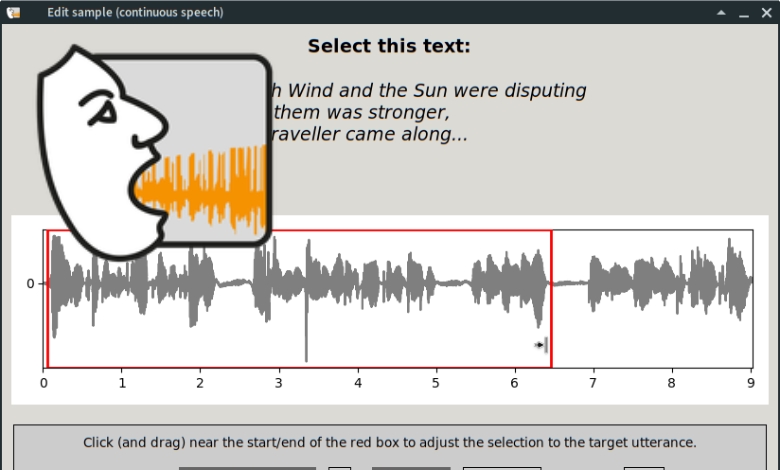Article index
In the panorama of tools for acoustic analysis of the voice, Voxplot emerges as a cutting -edge solution that combines scientific rigor and ease of use.
open source software , developed in collaboration with experts in the sector, offers an innovative approach to the analysis of vocal quality, making it accessible to both professionals and researchers.
Main features
VoxPlot stands out for its intuitive user interface, which allows you to carry out a complete vocal analysis with a few clicks.
This ease of use does not compromise in any way the scientific solidity of the instrument, which is based on validated Praat algorithms and uses standardized analysis parameters, following the recommendations of the AVQI and ABI vocal quality indexes.
One of the most appreciated characteristics of Voxplot is its multilingual nature. The interface is available in English, German and Dutch, while vocal analysis is supported in 12 different languages, including Italian.
This versatility makes it a precious tool for research and clinical applications in international contexts.
Advanced features
 VoxPlot offers a thorough analysis of the voice, based on 19 acoustic parameters and two multidimensional indices
VoxPlot offers a thorough analysis of the voice, based on 19 acoustic parameters and two multidimensional indices
among these parameters we find:
- SLOPE (DB)
- Tilt (DB)
- HF Noise (DB)
- HNR-D (DB)
- H1H2 (DB)
- CPPS (DB)
- Jitter Local (%)
- Jitter ppq5 (%)
- Shimmer (%)
- HNR (DB)
- Gne
- Pitch Mean (Hz)
The software allows you to record vocal samples directly or load existing WAV files.
An important functionality is the evaluation of the signal-rumor relationship (SNR), which allows you to optimize the registration configuration, thus guaranteeing the quality of the data analyzed.
Intuitive display of the results
One of VoxPlot's strengths is the presentation of the results. The software generates a complete vocal profile on a single page, including all the examination data and measured values.
The view includes a circular graph that highlights the deviations in 6 acoustic dimensions, using an intuitive traffic light system.
This approach allows a rapid evaluation of the vocal quality, facilitating the interpretation of the results even for less experienced users.
Practical applications
VoxPlot proves to be a precious tool in different areas:
- Speechopedia and Foniatria : for the clinical evaluation of the item, offering objective data to support the diagnosis and monitoring of treatments.
- Research : in the field of vocal analysis, providing a standardized tool for comparative and longitudinal studies.
- Voice professionals : for singers, actors and voice actors, allowing regular monitoring of vocal health and early identification of potential problems.
Scientific validity
Recent studies have confirmed the validity of Voxplot in the analysis of vocal quality. In particular, four acoustic parameters have proven to be particularly effective in evaluating the Raucendine and the voice blown:
- For the Raucendine: the harmonic-rumor report (HNR) and the pitch disturbance quotient with a five-period smoothing factor (ppq5).
- For the voice blown: the prominence of the Cepstrale Cepstral peak (CPPS) and the glottid-rumor excitement ratio (GNE).
These parameters have shown a strong correlation with the auditory perceptions of Raucendine and blowing voice, confirming the reliability of VoxPlot as a tool of acoustic analysis.
Conclusions
Voxplot represents a significant step forward in the field of acoustic analysis of the voice. His combination of scientific rigor, ease of use and intuitive display of the results makes it a precious tool for a wide range of users, from clinicians to researchers, to professionals of the item. to a large community, promoting the standardization of vocal analyzes and facilitating the collaboration between professionals internationally. However, it is important to emphasize that, as for each analysis tool, VOXPLOT's results should be interpreted by qualified professionals in the context of a complete vocal evaluation. In conclusion, VoxPlot is configured as a cutting -edge tool that promises to revolutionize the approach to acoustic analysis of the voice, offering an optimal balance between accessibility and scientific precision.







